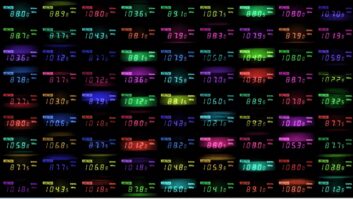This story has been updated to clarify that the aviation comments were about the pending FCC vote on asymmetric sidebands.
There’s been twist regarding a proposal to hike power levels for HD Radio stations. As the FCC prepares to allow asymmetric digital sideband operation, several aviation groups are now asking the FCC provisionally to exclude all FMs from 107.1 MHz and up from that, until further testing is completed.
Xperi has given its support to that provisional exclusion.
The aviation parties, including the Air Line Pilots Association and General Aviation Manufacturers Assoc., are asking for a larger “safety net” to protect aviation operations above 108 MHz.
The Aeronautical Radio Navigation Spectrum (ARNS) in the 108.0–117.95 MHz band is adjacent to the FM radio band. The aviation parties have been working with the National Association of Broadcasters and digital radio developer Xperi to develop and conduct additional studies to ensure that pilot navigation systems are properly protected against potential harmful interference caused by digital FM stations.
The FCC is scheduled to vote later this week on a change to streamline the process for allowing FM digital transmissions at different power levels on upper and lower digital sidebands. The proposal to allow asymmetric sideband operations without the need for experimental authorization was a companion proposal to the request from the NAB and Xperi to allow digital FM stations to use the highest allowable power levels. The FCC is also working on a notice of proposed rulemaking from 2023 that would invoke the change and expand the number of stations that can broadcast at higher digital power levels. However, the aviation industry has long balked at that proposal.
Regarding the separate but related pending change in rules for asymmetric operation, the aviation groups now say they are “concerned that, in light of the preliminary results of the unfinished testing, the FCC’s [asymmetric] Draft Order should be revised further in order to better protect ARNS operations from potential interference that may be caused by FM radio stations.”
[Related: “Aviation Industry Requests More Time to Evaluate HD Radio Proposal“]
They say in their latest comments that initial test results have identified concerns with 107.7 MHz for some aviation radios. As a consequence of that, the FAA has asked that the equipment manufacturers also test 107.1, 107.3 and 107.5 MHz for comparison with the protection levels used in its test models. The groups say equipment manufacturers are in the process of performing additional tests.
The airline industry groups are now recommending that the FCC require FM station operators on the four channels, along with 107.9 MHz, seek an experimental authorization before using asymmetric operation.
The aviation community is currently awaiting feedback from NAB and Xperi on the latest proposed test procedures for HD Radio power.
The NAB earlier offered a compromise to not extend the power hike to stations operating on 107.9 MHz that would lead to those stations — wishing to implement HD at high power levels — to operate with experimental authorization, or perhaps use a filter to ensure that there are no out-of-band emissions.
“Until the collaborative testing is completed, however, the aviation community is reserving comment on the NAB request for limiting consideration of potential adjacent bands interference issues to only FM stations operating on the 107.9 MHz channel,” the groups said last week.
[Related: “Press Communications Continues to Rally Against an HD Radio Power Boost“]
On Monday Xperi told the commission, “[B]ecause it is important to provide a streamlined path for as many stations as possible to utilize asymmetric sideband power, Xperi supports the suggestion of the Aviation Parties to temporarily expand the channels for which the use of asymmetric sideband power is not authorized by default to include Channels 296 through 300 [107.1 to 107.9]. This will provide prompt relief to most stations exploring ways to improve service while still allowing FM stations operating on
Channels 296-300 to request experimental authorizations as contemplated in the Draft Order.”







